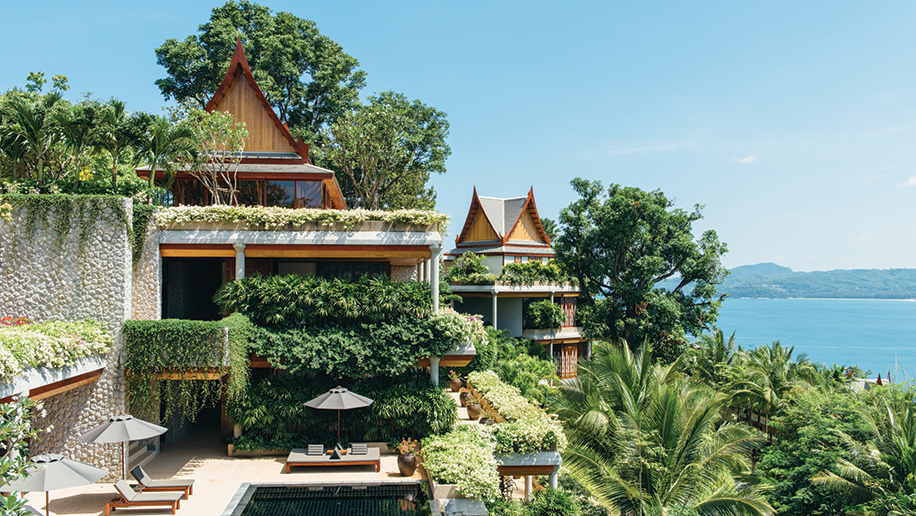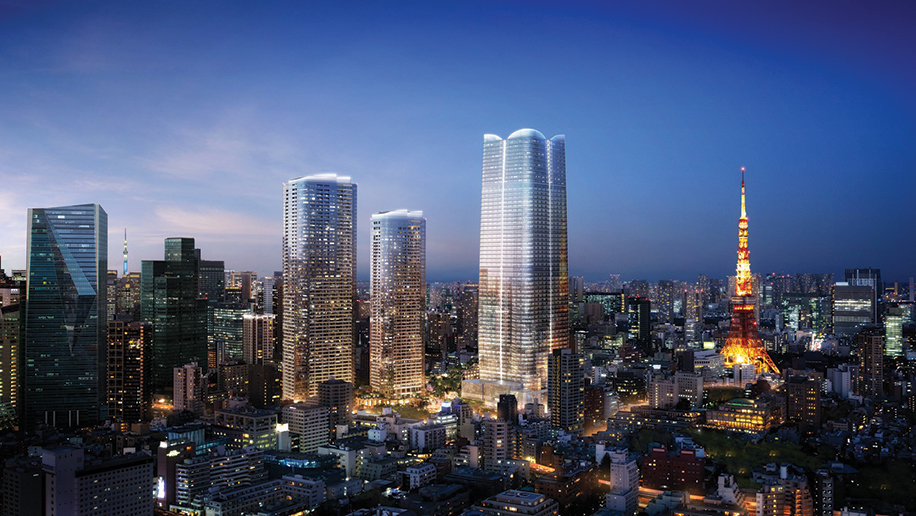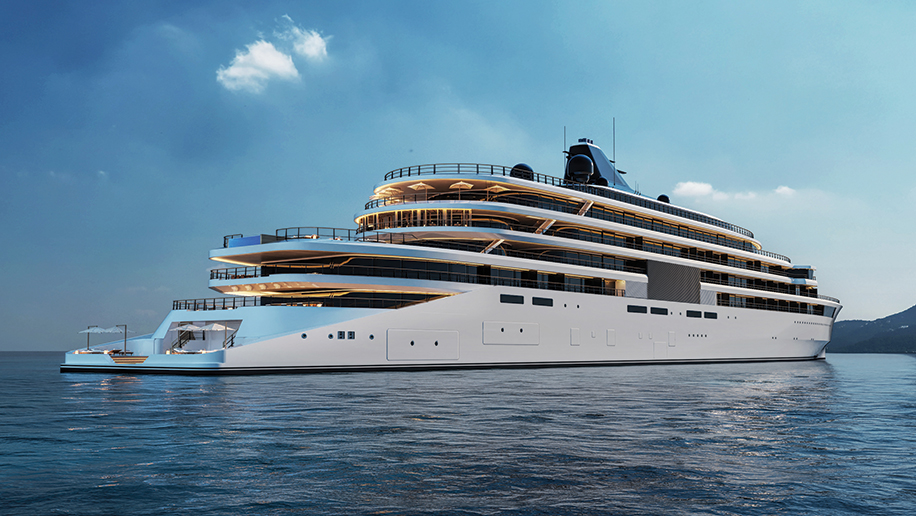
As far as absolute exclusivity is concerned, the Aman Group which has hotels in exotic locations such as Bhutan and the Dominican Republic, to the more urban settings of Tokyo and New York City, ranks among the best. From Charles Saatchi and Kenzo Takada to Kate Moss and George Clooney, flying to an Aman property was a habit. In fact, such was the fierce dedication of some of the world’s wealthiest to visit Aman properties, that there was an entirely new phrase coined to describe its tribe of loyalists: Amanjunkies.
The Aman concept began when its Indonesian founder, Adrian Zecha, was searching for a holiday home in Phuket in the mid-1980s. He came across a coconut plantation with breathtaking views – it ended up being the location of the first Aman hotel, called Amanpuri, which was set up in 1988. Aman hotels, over the years, subsequently opened in the wider Asia Pacific region, before eventually expanding into Europe and the Americas.

Today, the Aman Group consists of 34 hotels and resorts worldwide spread across 20 countries. “We have announced a pipeline of nine future destinations in locations including Aman Nai Lert Bangkok (2024), Amanvari, Los Cabos (2024) – our first property in Mexico – Aman Hegra (2025), Aman Miami Beach (2026), Aman Beverly Hills (2026) and Aman Niseko (2026) – our first ski retreat in Japan. We also have a wider pipeline of forthcoming projects which have yet to be announced for new Aman and Janu locations,” Vladislav Doronin, owner, chairman and CEO of Aman Group tells Business Traveller.
In 2020, the group introduced its second hospitality brand called Janu. But before understanding what Janu offers, you must understand Aman. Aman was built around the concept of guests finding solace during their stay. They are always set in stunning locations. In fact, over a dozen Aman properties are located within or close to UNESCO sites. Aman has previously reportedly had an employee-to-guest ratio of 6:1, and the staff were not trained from a standard operating procedures manual, but instead encouraged to develop a culture of engagement that most suited the local culture of the country where they were present. An anecdote from Aman’s property in Jiwo suggests that 95 per cent of its staff there were at one point employed from among Indonesian villages, and the hotel even hired a full-time English teacher to train them.
Recent openings from the Aman brand include Aman New York, which welcomed its first guests in August last year and is located in Manhattan’s Crown Building. A jazz club, an Omakase bar, a cigar lounge, a three-floor spa and 83 suites can all be found in this property which was Aman’s third opening in the US after Amangani in Wyoming and Amangiri in Utah. In the US, while the Miami Beach property is slated to open next year, Aman Beverly Hills set within a botanical garden spread across eight acres, will open by 2026.

The Janu brand meanwhile sets out to be something that Aman isn’t. “Designed with a different pace and energy to Aman, Janu has been created to encourage greater social connections for guests and the design of the properties will still follow our loved formula which I call ‘Asian chic’ but with the central principles being about encouraging connection, rather than the privacy Aman is renowned for,” says Doronin.
“We first announced Janu in March 2020, as we had identified a gap in the market for a luxury hospitality brand which caters to a younger mindset seeking connection. It is a concept which we are confident from our extensive research that will appeal, for example, to the rising generation of our Amanjunkies.”
Doronin says that the first Janu hotel, Janu Tokyo, is being designed by Denniston – which was also behind some of Aman’s iconic properties including those in New York and Venice, and which has also designed other major hospitality projects including the Four Seasons Tokyo, Chedi Andermatt, and the One&Only Reethi Rah.
Janu Tokyo is scheduled to open in the autumn of this year in the city’s prime location of its Azabudai Hills development. In doing so, it will become the first operational Janu property worldwide. “As our flagship Janu destination, it will be a milestone moment in the development of the Aman sister brand, which means
‘soul’ in Sanskrit. In addition to Janu Tokyo, we have announced Janu Montenegro and Janu AlUla in Saudi Arabia. We have a robust pipeline of future destinations across both urban and resort settings for Aman and Janu which will bring [those] experiences to new corners of the globe,” notes Doronin.
A grand scale
In August last year, the Aman Group secured a US$900 million investment from two investors, namely Saudi Arabia’s sovereign wealth fund, the Public Investment Fund (PIF), and real estate investment firm Cain International. Cain said that the investment valued Aman at US$3 billion. “Across the company, we employ 6,500 people globally both within our destinations and hotel teams, as well as corporate offices located all over the world. The investment received from our strategic partners is being used to accelerate our existing pipeline of future Aman and Janu destinations. In addition, the funds will be used to acquire additional sites, and invest in the ongoing maintenance and development of our existing collection of Aman destinations,” explains Doronin.
Aman’s expansion was previously focused on Asia, the Americas and Europe, but the Middle East has now cropped up on its radar. Already, the group has announced three confirmed openings for Saudi Arabia. “We have announced Aman Hotel and Branded Residences in Hegra, alongside the UNESCO Heritage Site of AlUla, as well as an Aman tented camp and a Janu hotel in Saudi Arabia.
“Saudi Arabia is an exciting location for luxury hospitality, as the Crown Prince’s vision to open the kingdom is now a reality. I see the destination in the same way I view the United States or Japan for a travel experience. For example, in Japan, we have Aman hotels in Tokyo where you get the vibrant city experience, Kyoto where guests experience the ancient culture, and Amanemu in Shima National Park which is totally immersed in nature. Soon we will have Aman Niseko offering guests the chance to ski in Japan as well. To me, these destinations enable us to offer guests a journey of different experiences in unrivalled locations. Saudi Arabia also delivers for us this breadth of experiences with city destinations like Riyadh, and cultural heritage in locations like AlUla, as well as the incredible nature and diving experiences in the Red Sea. “Our guests travelling across Saudi Arabia [will] be able to experience first-hand the incredible diversity, culture and landscapes that the country offers,” says Doronin.

Doronin defends the decision for Aman having not entered the Middle East earlier, saying that he is “very specific” about the location requirements for the Aman and Janu brands. “The Middle East has been a region we have been exploring for some time. We have announced three destinations in Saudi Arabia, and I am excited to say that we have additional Aman and Janu locations [planned] across the wider Middle East which we will share more details about in due course,” reveals Doronin without elaborating on where those properties will appear.
Apart from its two Aman and Janu brands, its Aman Branded Residences vertical is also a sought-after offering from the group. Aman has been offering its branded residences proposition since it launched with Amanpuri in 1988. More recently, Aman New York, for example, featured the first urban setting of Aman residences and comprises of 22 units. “Over time, we have added further to our branded residences portfolio and we currently have 12 destinations which feature Aman Branded Residences, and the majority of our forthcoming projects will feature residences, including at Aman Nai Lert Bangkok, Aman Hegra, Amanvari, Aman Beverly Hills and Aman Miami Beach. Additionally, we are exploring the addition of a limited number of residences at several of our existing resort destinations, such as Amankila and Amandari.
“In the future, the brand will see us increase the number of branded residences across our portfolio, catering to the vast demand we have seen. All projects have pre-sold with the highest premiums to the market,” he says. In August last year, at the time of securing the investment from PIF and Cain, Aman said that it had generated US$2.4 billion in sales of its branded residences over the previous 12 months alone.
From land to the sea, Aman is set to branch into all-new territory with its Project Sama superyacht – a floating Aman hotel –that is being developed in partnership with Cruise Saudi and which Doronin says will be launched by 2026. The 600-foot vessel, equipped with 50 guest suites, is being designed by Sinot Yacht Architecture and Design, and recreates the full-service of amenities found in the group’s resort including a spa, club, and range of dining experiences.
As part of its brand-building exercise, the group’s lifestyle offering of Aman Essentials consists of Aman branded fragrances, a leather collection comprising of handbags, wallets and passport cases, and even a new skincare range – Aman Essential Skin –that is produced in Japan with Kose. Doronoin adds that the group will also launch another division called Aman Interiors, the details of which he says will be revealed soon.
As Doronin continues to diversify and build the brand, sustainability he says is key to its existence. “Our sustainability efforts are tailored to each of our destinations and its respective needs. Our hotel teams around the world consider four pillars in their work around sustainability – local heritage, local culture, environmental protection and social responsibility. Each property then can determine the best way in which to support the needs of its local area,” he says, citing examples of Amanpulo in the Philippines which has developed a sea turtle sanctuary and monitoring programme to help support the long-term survival of this endangered species. Additionally, that property also invested in a desalinisation plant to convert seawater to freshwater.
Meanwhile, at Amankora in Bhutan, Doronin adds, the team has focused on reducing the food miles by sourcing produce from the immediate local regions, and supporting the local heritage by participating in programmes related to the restoration of the historic Bhutanese fort – Wangdue Phodrang Dzong – which was built in 1648.
While this year will see its Janu brand open its first property in Japan, and five other Amans planned to open worldwide by 2025 – Aman Residences, Tokyo, Amanvari in Mexico, Aman Nai Lert in Bangkok, and two destinations in Saudi Arabia – Doronin teases the idea of another all-new hospitality brand from the Aman Group. “I am working on the development of a third brand, which is focused on sustainability, bold design statements and storytelling on an epic scale,” says Doronin in a statement that is enough to pique the interest of every Amanjunkie.












